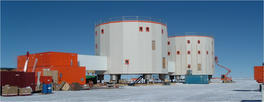One year of blogging
Sismordia is one year old today. I shall mark the anniversary with a look back at my original hopes for the blog and how things have evolved over the past year.
In my very first post Starting out I wrote:
The Concordia Seismic Experiment - as we have lovingly named it - has gone from residing somewhere in my brain, to being present also in my gut. It's a daunting thing, especially for me, as this will be both my first complete seismic experiment, and my visit to Antarctica.So my stated goals were
I've set up this blog partly in order to relieve some of the tension that's building up as we prepare to make this experiment a reality, but also to share the experience with as many people as possible. I hope to convince some of my colleagues working with me on the experiment to participate in writing the blog, and I hope to entice you all to read it and send in your comments.
- to share the experience of working in Antarctica;
- to elicit the participation of my colleagues;
- to entice you all to read my blog and send in comments.
In the second goal, I failed most miserably: Sismordia is still essentially a one-woman blog. My colleague JJL provided much needed copy-editing of the posts I emailed in from Concordia, but declined to write for Sismordia himself. As for those colleagues that have participated in the Antarctic seismology project (and continue to participate, for the project will live a few years yet), my greatest thanks go to JY.
My third goal was to be read. I was skeptical at first about the interest that a blog such as Sismordia could elicit in the blogging world. The subject matter is somewhat arcane, I tend not to deal in political controversy, and have not spent much effort in publicizing the blog.
Looking back over the statistics of the past year from Google Analytics, my 170 blog posts have received just over 5000 visits from about 3700 unique visitors who viewed a total of over 8600 pages. The graph below shows the number of visits per week over the past year. The peak in December-January corresponds to my Concordia field trip, which seems to have been the most successful time for Sismordia.

A few months after I started the blog, I linked my RSS feed through Feedburner. The number of subscriptions to my feed has risen gradually over the past year, and is now oscillating around 40.

So what can be said to sum all this up? Well for starters, I am still blogging, so the experience cannot have been too traumatic! As for the numbers, they are not Earth shattering, but are respectable all the same. I think I shall give my self a pat on the back as I settle into my second year of blogging.


